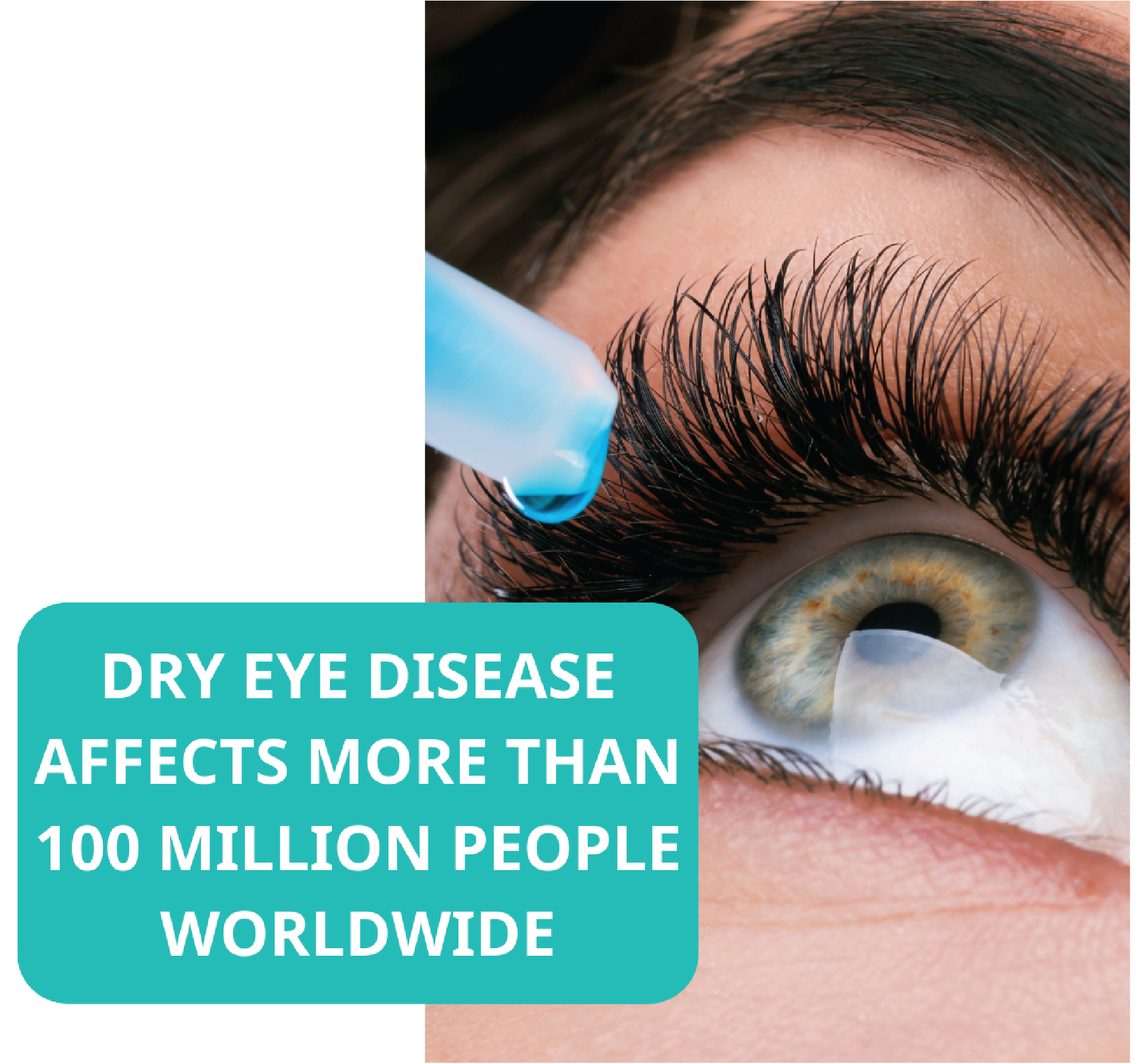Understanding Dry Eye Disease
Dry eye disease, also known as keratoconjunctivitis sicca, is a chronic and progressive disease affecting more than 100 million people worldwide. Common symptoms of dry eye include dryness, soreness, eye fatigue, grittiness, watering, and sensitivity to light. Over 80% of chronic dry eye disease is caused by Meibomian Gland Dysfunction (MGD). Meibomian glands are in your eyelids and secrete meibum, or oils, that create a protective film over your tears.
Patients with MGD do not properly produce enough meibum, breaking down the protective tear film and allowing for tears to evaporate. As the affected glands become increasingly inflamed, the normally oily secretions become thick like butter, restricting gland secretion. In many patients, glands affected by MGD can atrophy, leading to gland death. It is important to identify and treat this disease early.

What Causes Dry Eyes?
Understanding Dry Eye Disease

Dry eye disease, also known as keratoconjunctivitis sicca, is a chronic and progressive disease affecting more than 100 million people worldwide. Common symptoms of dry eye include dryness, soreness, eye fatigue, grittiness, watering, and sensitivity to light. Over 80% of chronic dry eye disease is caused by Meibomian Gland Dysfunction (MGD). Meibomian glands are in your eyelids and secrete meibum, or oils, that create a protective film over your tears. Patients with MGD do not properly produce enough meibum, breaking down the protective tear film and allowing for tears to evaporate. As the affected glands become increasingly inflamed, the normally oily secretions become thick like butter, restricting gland secretion. In many patients, glands affected by MGD can atrophy, leading to gland death. It is important to identify and treat this disease early.
Common Symptoms of Dry Eyes
-
Burning
-
Film over your vision
-
Fluctuation your vision’s clarity
-
General irritation
-
Itchy eyes
-
Sandiness/grittiness in your eyes
-
Sleep/mucus in the mornings
-
Tearing/watering eyes
Dry Eye Treatment Options
-
Artificial tears, gel or ointment
-
Intense Pulsed Light (IPL)
-
Radio Frequency (RF)
-
Amniotic Tissue Application
-
Punctal plugs
-
Topical prescription medications
-
Vitamins/Supplements

